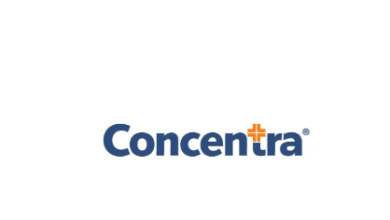Is Your Investment Portfolio Actually Diversified? 5 Tests to Know for Sure
Portfolio diversification is an elusive goal. It’s unfortunately not as simple as buying a few sectors and total market ETFs and calling it a day, as we’ll see in a moment.
So what is diversification? As the infamous saying goes, you know it when you see it. Use these five tests to assess how well-diversified your investment portfolio really is (and understand what to do if it’s not).
1. You’re Not Simply Trying to Match the Market
These days, many newbie investors equate “diversification” with “matching the market.” That is, they figure that as long as their portfolios have a good mix of broad market ETFs that approximate the performance of major indexes like the NASDAQ and S&P 500, they’re as diversified as they need to be.
Not even close. For starters, the assumption that “matching the market” is the best you can hope to do in the long run is ill-founded. But that’s a long story, so let’s set it aside and focus on an even more fundamental assumption that’s just as misguided — that the only markets you need to match are the aforementioned stock indexes.
Sure, broad-market indexes provide exposure to lots of different industries and national or regional economies. But they exclude important asset classes or provide only indirect exposure to them. Without those, your portfolio is not adequately diversified, says Yieldstreet co-founder and CEO Milind Mehere.
2. Parts of Your Portfolio Are Expected to Underperform When the Market Drops
It would be nice if every component of your investment portfolio performed well regardless of market conditions. Many so-called professional investors claim their portfolios do so.
They’re exaggerating or outright lying, of course. Deep down, we know that’s not how markets really work. When the economy tanks or political unrest looms somewhere out there in the world, some asset classes shrivel and others shine. When the economy rebounds and peace prevails, the pendulum very often swings back.
The point of diversification (one point, anyway) is to reduce the risk that a particular event or condition will wreak havoc on your portfolio, notes Michael Kitces, head of the planning strategy at Buckingham Wealth Partners. Diversification doesn’t mean preventing down quarters or even down years, nor does it mean every asset you own will appreciate in value indefinitely. These outcomes aren’t realistic to expect.
3. You’re Taking Advantage of Opportunities Not Available to Every Investor
Wealthy and wealthy-ish individuals and families have access to certain investment opportunities that the rest of us don’t. That’s the benefit of being an accredited investor, a status reserved for people with high incomes, high net worth, professional credentials that make them especially knowledgeable investors, or all of the above.
According to the Securities and Exchange Commission, accredited investors must have a net worth equal to or greater than $1 million, incomes consistently greater than $200,000 (or $300,000 for married couples), or the aforementioned professional credentials (the list is pretty long).
Does this mean your portfolio can’t be diversified if you don’t qualify for accredited status? Not quite. Non-accredited investors do have access to investment offerings that, until fairly recently, were limited to accredited investors. The rules governing these offerings are quite complex, as are the guidelines for non-accredited investors who’d like to participate in them. But a smart, determined “every person” can navigate them.
4. A Significant Fraction of Your Net Worth Isn’t Invested in Equities
Remember the pitfalls of assuming “diversification” is one and the same as “matching a familiar set of broader market indexes”? Now it’s time to do something about it.
Sophisticated investors achieve true diversification by investing in assets that can’t be traded on equities markets. That might mean art, or real estate, or precious metals, or cryptocurrencies, or even cash value life insurance.
Ideally, it means investing in as many different types of alternative assets as possible. That’s the best way to ensure your portfolio as a whole is set up to deal with whatever the future brings.
5. You Always Have Some Cash in Reserve
Many investors assume that holding any cash in reserve is inherently wasteful. When interest rates are low, as they have been for years, these naysayers seem to have a point. Why let your cash sit there and slowly lose value due to inflation when you can invest it in assets that outpace the inflation rate?
For one reason, because it’s not always the right time to invest in said assets. Remember, every component of a well-diversified portfolio doesn’t (and can’t) increase in value forever. Asset prices fall all the time. When they do, you’ll be glad you had that cash to buy at a discount.
It’s Time to Get Your Portfolio in Shape
Let’s review. Diversified portfolios:
- Don’t merely try to match the S&P
- Don’t rise or fall in lockstep
- Include offerings traditionally reserved for the ultra-wealthy
- Include alternative assets
- Have a cash component
Got it? Good. Now, it’s time to get your portfolio in shape.






